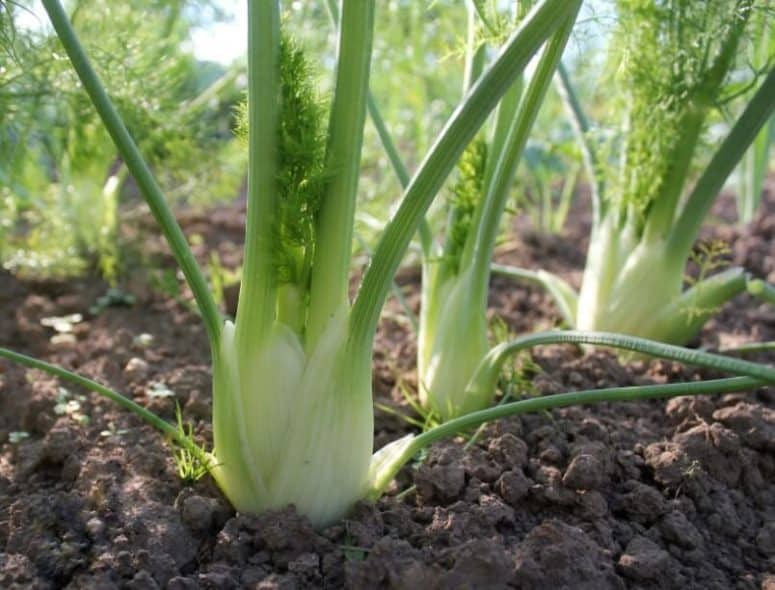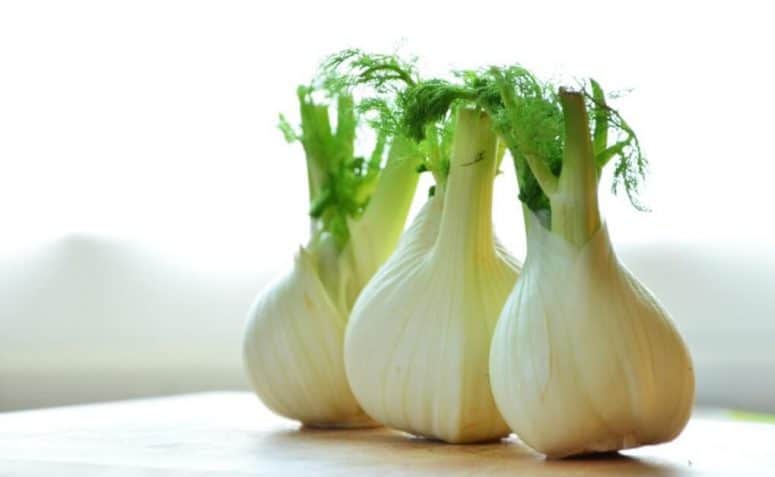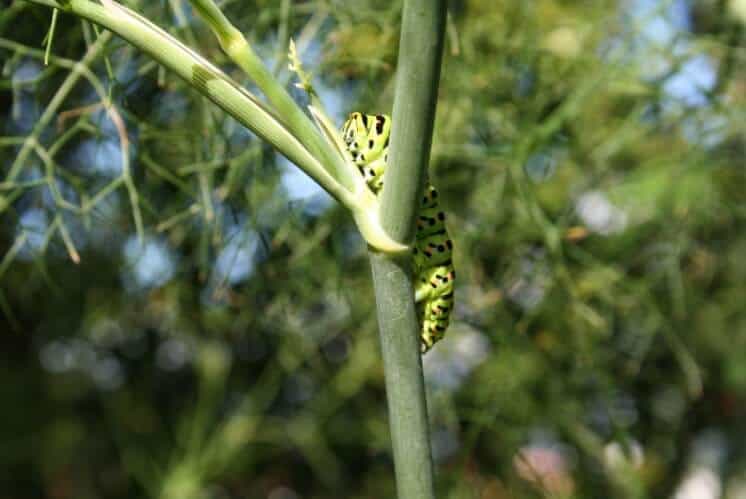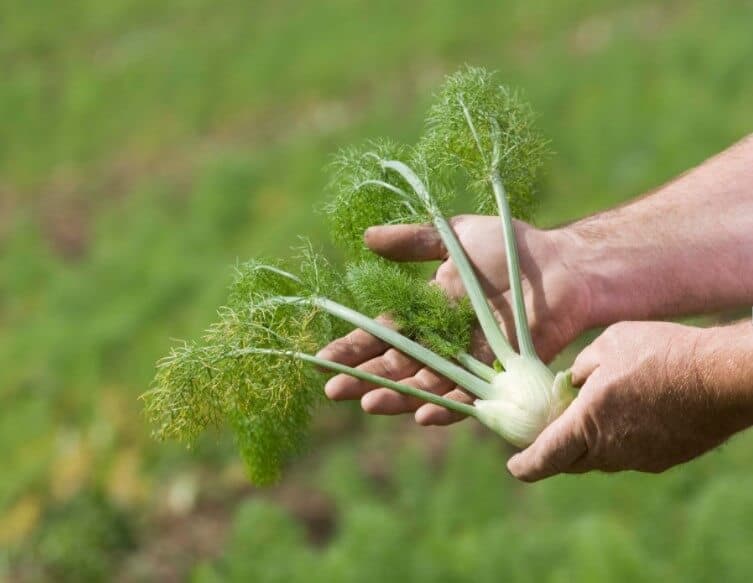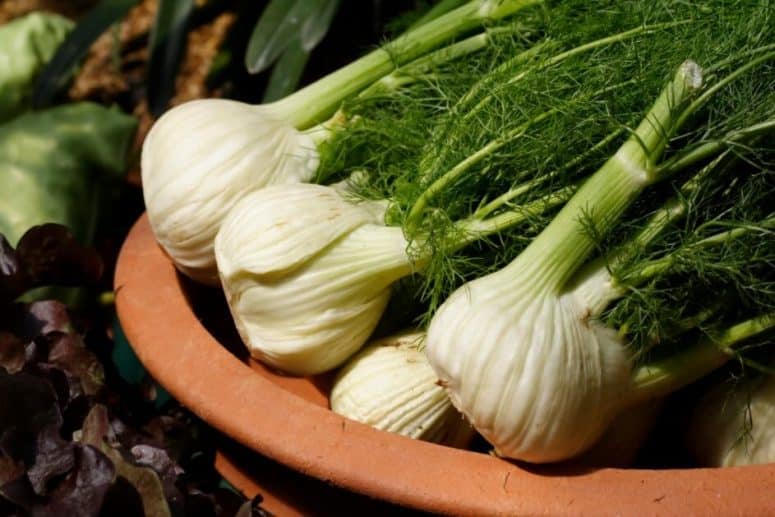How to Grow Fennel At Home (A Beginner’s Guide)
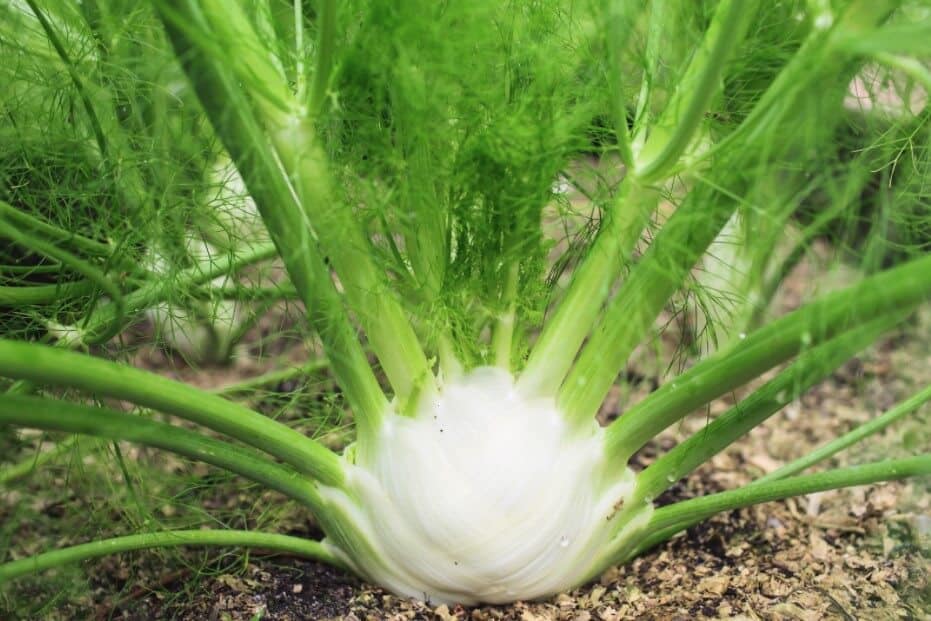
Fennel is one of the herbs which you can eat all of its parts, from the bulb to the flower. Fennel has feathery leaves similar to dill, and it belongs to the carrot family, roots vegetable.
Also, fennel is a very versatile herb, just like the others. What’s better is that as a root vegetable, you can consume fennel in many different ways. Hence, having it grown in your house must be good!
In this post, you’ll learn about how to grow fennel in your home garden. But before we dive into the requirements, let’s start with the introduction to fennel varieties.
Fennel Varieties
Before we start planting fennel, it’s good to know the varieties of it. There are two fennel varieties you can choose based on their characteristics and your hardiness zone.
Sweet Fennel (Foeniculum vulgare)
Sweet fennel is also known as the common fennel. It is large, and it could grow up to 5 feet tall.
In summer, sweet fennel bloom flat yellow flowers that attract butterflies. Sweet fennel and all fennel varieties are hardy in plant hardiness zone 4 through 9.
Purpureum Fennel (Foeniculum vulgare ‘Purpureum’)
Purpureum fennel is also famous as Rubrum fennel. This one is noticed to be very attractive with its purple-bronze foliage.
In the mid to the late summer, the flower will bloom, bringing its aromatic seeds. Purpureum fennel is hardy in plant hardiness zone 4 through 9.
Fennel Cultivation
Now you know the varieties of fennel. I guess it’s time for you to learn about its cultivation, starting from the soil until the divisions.
-
Soil Requirements
What fennel would love to be its soil is the moist and well-drained soil, just like other herbs would. Also, be mindful to check the soil’s pH because the fennel prefers more acidic soil from pH 5.5 to 6.8.
-
Sun Requirements
For the best growing process, give your fennel full sunlight exposure. This one does not tolerate shades, though. A shady spot is going to make fennel a little floppy and leggy.
-
Hardiness
Fennel is hardy to USDA hardiness zone 4 through 9. Therefore, be mindful to know your zone and whether or not the fennel would grow well in your area.
-
Water
Water your fennel plant regularly once the soil is dried out. Never overwater the soil when planting fennel. Otherwise, root tot might happen.
-
Fertilizer
Fennel is quite versatile and flexible, even in its nutrients needs. Fennel does not need to be fertilized, especially during its growing season.
However, it is still good to give your fennel nutrients or some amount of fertilizer regularly.
-
Mulch
Mulch is sometimes necessary in some cases of the plants, including some herbs. It covers the soil made of sawdust or compost to reduce evaporation, maintain the temperature, control weeds, and enrich the soil.
Does the fennel need mulching? That would be great, though! Mulching fennel with organics could insulate the soil and maintain the moist texture that the fennel needs. Besides, mulch cold prevent weeds as well.
-
Pruning
Pruning is necessary to encourage more growth in herbs. As for the fennel, you can prune it by cutting it back in the early season to encourage more growth.
The process of pruning could also prevent the fennel from overseeding.
-
Division
Root division is another propagation part of cultivating fennel. To do it, you can vertically split the fennel and plant the segments in the autumn soil, so the following year, this would be mature enough.
Of course, the divided fennel needs regular watering, especially in the dry period. Also, you have to keep the weeds down in the beds.
Best Methods to Grow Fennel
There are two ways to grow fennel. You can grow it from stem-cutting as well as growing from seed.
Stem Cutting
The first best method to grow fennel, and apparently what almost all people do, is stem cutting. It means you plant the previously existed plant that you cut beforehand.
Propagating the fennel by cutting can be done by placing the fennel’s root fruit in a jar of water with the base facing down.
Put the jar in a sunny spot in the house and change the water every day or two to prevent it from getting rot or moldy.
Growing from Seed
Growing fennel from seed is the best and easiest way to plant it!
Simple, you can sow the seeds in the garden in the early season, best in last spring after the frost is gone. Place them 10 to 12 inches apart from each other.
Seeds need germination, and fennels need 8 to 12 days to germinate.
Additionally, you can plant the seed indoors under a moderate amount of lights and harden them off before transplanting them into your garden.
How to Care for Fennel
Growing herb means ready to take care of it. That includes pests, diseases, propagation, harvesting, until storing the herbs.
Pests/Disease
Parsleyworm is one of the most serious pests that could attack your fennel. Check the plants regularly as you water or treat them every day. Take the worm immediately. To prevent it from eating your fennel.
However, you can leave it there if you have bushy fennel in your garden. Those parsley worms could turn into black swallowtail butterflies, which is a good pollinator in your garden.
As for disease, the fennel is sensitive to fungus. How to prevent fungal disease? You can make enough space for each plant to begin with. After that, you should be mindful not to overwater the soil so that the whole plant will have enough air circulation.
Propagating Fennel
Regrowing fennel could be done in some ways: growing it from seed and cuttings.
Growing fennel from seed can be done in the early season with 10 to 12 inches apart for the best result and preventing fungal disease. You can do cuttings too.
Do it by cutting the fennel back, placing the segments in the jar of water, and letting it grow!
Fennel does not divide easily. Therefore, it is best to plant your fennel from seed. Besides, the fennel seeds don’t take a very long time to germinate and establish.
Harvesting Fennel
You can tell that your fennel is ready to harvest when the bulbs are about 7cm or around already. Cut below the bulb at the ground level at any time. After the seeds have formed and established, you can harvest the flower.
Remember not to pull and harvest fennel during winter because then it is hard to continue growing afterward. Also, never leave the leaves attached to the bulb. Otherwise, the bulb will be soft, sucking all the moisture.
Storing Fennel
We finally store our fennel! Now separate the stalks and the bulb of the fennel in the refrigerator.
By saying separate, I mean you keep it in different places of the fridge. This would last for five days. Fresh fennel is best used right away after harvesting or one day storing.
As for dried fennel, if you do dry some, you should keep them in an airtight container without sunlight exposure, and it could last up to one year.
